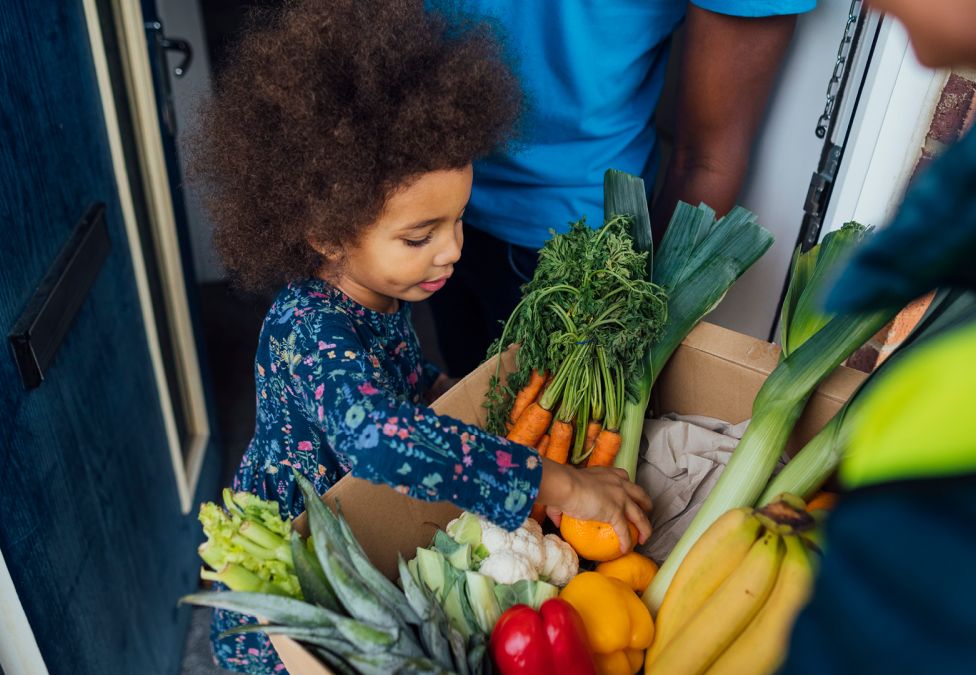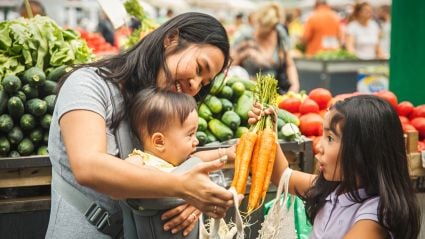
Whether evaluating access to health care, transportation, or healthy foods, there is a disproportionate impact in underserved communities. For example, nearly 24 million people live in food deserts in the US, low-income communities located more than one mile from a supermarket, according to the Social Policy Data Lab. People residing in these communities lack convenient access to affordable, quality groceries. While food is available through fast food or convenience stores, prices are often higher, and there are minimal produce options.
This limited access has a compounding effect as we see a higher incidence of chronic diseases like diabetes in food desert neighborhoods, according to MedicalNewsToday. In addition to health implications, the US Department of Agriculture (USDA) reports that residents without a car could travel up to 20 miles each way, constraining what and how much food they can purchase. Imagine juggling multiple jobs, taking three buses to get to the nearest grocery store with small children in tow—and then feeling the impact of a stigmatized experience while shopping, as the Food Research & Action Center explains. While many encounter these harsh realities today, changes made during the pandemic, like the expansion of the Supplemental Nutrition Assistance Program (SNAP) Online Purchasing Pilot, lessen the load, increasing food access and fostering convenience equity.
We are building a world where convenience equity can be a reality for all.
Convenience equity refers to equal access to convenient essential services and resources for all members of society. When discussions ensue about addressing disparities among the social determinants of health, convenience does not often surface as a solution. Until 2019, use of SNAP benefits was only available in a physical store. Families receiving SNAP and residing more than a mile away from a supermarket did not have the convenience of ordering groceries online with their benefits and having them delivered to their doorsteps—an option that would have enabled them to navigate through challenges driven by lack of time and transportation.
The SNAP Online Purchasing Pilot leveled the playing field, allowing SNAP participants to use their benefits to buy groceries online for pickup or delivery. This innovative model offers a strong illustration of how convenience equity can play an integral role in disrupting access disparities.
In 2014, the Farm Bill directed a pilot to evaluate feasibility of secure online SNAP benefit redemptions with a limited set of state agencies and retailers. While the pilot launched in New York in 2019, the USDA approved pilot expansion across the country during the pandemic. What started out as a pilot in just a few states is now a nationwide program providing over 26 million households the opportunity to access healthy, affordable food from the comforts of their home, positioning them to save time and transportation costs, while alleviating undue stress and stigma.
According to the USDA, online SNAP redemption, still nascent, grew exponentially from 1.7 percent of all SNAP redemptions (online and in-store) at the end of 2020 to 5.7 percent of SNAP redemptions (online and in-store) in 2022. Online SNAP has unlocked choice and convenience for those most vulnerable among us, such as low-income families with children and older Americans. In a study published in the November 2023 issue of Food Policy, researchers found that the share of low-income US households experiencing food insufficiency fell from 24.5 percent to 22.5 percent in 2020. The impact corresponds with the expansion of the SNAP Online Purchasing Pilot. As other government programs like the Special Supplemental Nutrition Program for Women, Infants and Children modernize and extend benefits redemption online, convenience equity will be in reach for more families in need.
Amazon is committed to applying our innovative spirit and resources to help address challenges communities face. This is why we collaborate with nonprofit organizations across the country to educate communities about how they can take advantage of convenient grocery options using SNAP benefits. We are working to further amplify the important work these organizations are doing in their communities, like donating groceries to food distribution events and assisting eligible customers to enroll in SNAP benefits.
Last year, Amazon Access made SNAP EBT payment acceptance available to those eligible nationwide. So, no matter where customers are in the US, they can shop for groceries from Amazon.com and from Amazon Fresh and Whole Foods Market where available. To increase fruit and vegetable consumption, we have also teamed up with agencies like the Washington State Department of Health to offer SNAP nutrition incentive programs online. Through the power of public and private collaboration, we are building a world where convenience equity can be a reality for all, regardless of one’s socioeconomic status or geographical location.


















